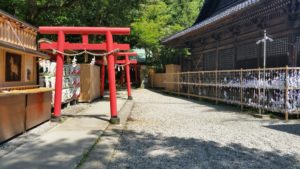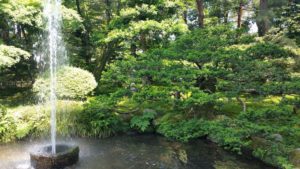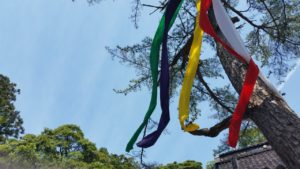It might be called “cultural conditioning.” The trip to Japan was long, and exhausting, and I barely slept from a combination of stress and excitement and the ever-pressing need to study, study, study. Yet, taking my first few days together, I might say that the plane flight (and second flight, and bus trip) was the most arduous part of my transition. As the days following my arrival in Japan proceeded, I found myself able to connect with the new environment with relative ease.
In the past few years, I’ve spent my time learning about Japan and getting exposure to Japanese culture. And I am not talking about anime. Books like Natsume Soseki’s Botchan, or Haruki Murakami’s The Wind-Up Bird Chronicles; an education in literature and social currents during the past two-hundred years or an investigation of Japan’s miasmic ancient history through Notre Dame classes; of course, activities with the Notre Dame Japan Club, experiencing such traditions as kendo; and, maintaining an active apetite for Japanese cuisine; in such ways have I found exposure to Japan while not being in Japan. Certainly, nothing approximates to the material reality, but my surprises have been minimized, to say the least.
Which is to say that I have been able to put the majority of my efforts into dealing with the real transition of this summer experience: that of speaking Japanese extensively, everyday. At the beginning of this trip, I was a first-year student of Japanese. My challenges have been many in only a week’s time. I have found that communicating with a fundamentally sound but limited linguistic knowledge demands creativity and fast-thinking in everyday settings. When I am talking with my host-mother, for instance, and come upon a vocabulary gap in the conversation (I want to say “musician,” and I have no clue how to do), I must consider what I have at my disposal to approximate “musician,” no matter how goofy my expression sounds. Being understood is important; eloquence can come with time, but being able to speak at intervals and maintain a discussion is more foundational to the experience.

In many ways, I have felt myself to be a child since I have arrived. The common college refrain is “I’m not a kid anymore”–maybe that’s high school, but nevermind. Point being that learning a language through cultural immersion is a humbling experience that demands one’s ability to learn from others, from all kinds of backgrounds and persuasions. Given my skill level, I know there are Japanese children who can speak Japanese better than I can. And that’s good; I would hope so. Recognizing this, my next conversation with a 6 year old can be as educational as a conversation with the 40 year old neighbor, or the elderly woman in the convenience store, or that grumpy teen on the bus.
Already, I have been able to learn words outside the classroom setting through simple environmental exposure. The Shinto protective charms, o-mamori (お守り), are now a part of my internal lexicon. As with hatake (はたけ/畑), or agricultural field, and “owari sheetei kudasai” (おわりして下さい)(“Please take seconds.”) These are words and phrases with varied contexts, but life is composed of varied contexts, and immersing onself–linguistically, culturally–in another place is about living the life of another people, in all respects.
That said, I have so much longer to go on the road of language learning and living. Time with my host-family is a time for discussion, good food, and Japanese game-shows (which are great, by the way). But I must strive for more chances to connect out in the city and community. While I have been to a few cultural sites thus far, such as Kenroku-en Gardens (兼六園)(nationally recognized for its beauty), there are more sites to visit, and people to engage while doing so.

The students of the local university likewise present a great chance for conversation. Language tables are sure to be my next step in navigating the language-learning process, alongside others who are in the same pursuit. Univerity students have their share of thoughts to give on all manner of topic, within Japan and without. The language table I have been to thus far was a initially daunting but actually fun once started. To bridge a gap like that made by language is a rewarding experience, especially when doing so reveals how truly connected people are by just being human. Topics from international study to rough class schedules to famous composers and photography found their way into the language table discussion, and I look forward to he next time when I can not only learn more about Japanese language, and not only learn more about Japanese life, but to connect with others.
Well, that’s me for now. A fledgling in the ever-increasing expanse of Japanese language, or so it seems. But everyday brings more experience, more encounters, and more understanding of those tiny details that make up a thing called life in Japan.
Thanks for reading!
Joshua Kuiper (カイパー)
